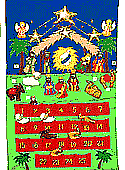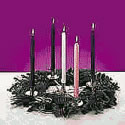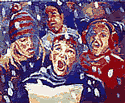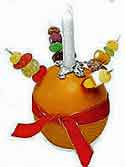 St Mary's Church, Dymock
St Mary's Church, Dymock
| Admin | |||
| . | Home | Contents | |
| H&S Policy | People Safety | Grave Yard | |
The Church & The World
Faith & Care
Faith & Care
Things Past
People & Features
People & Features
Seasons and Festivals

As well as the Seasons and Major Festivals, the church celebrates several 'Special Days' throughout the year to remember, honour or support our work in God's world. Celebration of the Special Days is usually optional, Christians chose which they want to include. Click here to view the 'Special Days'.

The season of Advent always begins on the fourth Sunday before Christmas Day, which is usually the last Sunday in November, but occasionally the first Sunday in December, depending on the calendar that year. In the western churches this marks the beginning of the new church year (Eastern Orthodox churches start their new church year on 1st September).
As with Lent (which is also a season of expectant waiting for Easter) the church celebrates the season of Advent with austerity, self reflection, fasting, and study. Study, may be done on one's own, eg: reading a suitable book, or it can be done together by attending a course with others, either on a single occasion or every week throughout the season of Advent.
Austerity: It's usual to remove from the church all flowers and adornments during the whole season of advent.
Self-reflection and fasting: This is similar to the self-reflection during Lent and is a time for bringing to mind one's failure to keep God's laws and being sorry for it, except in Advent it also includes reflecting on our readiness for the promised period of judgment at the end of time.
Study: To improve oneself and one's knowledge of Christianity, and so be better prepared for the second coming of Jesus, and to help remember the Christmas events and heighten the expectation of Christmas Day.
Advent customs often include....
Advent Calendar


Carols


Figures of
Mary & Joseph
The Service is usually held just before Christmas Day, either in the church with model figures to represent the characters of the story, or else in the open air outside, using a real donkey and real people to depict the characters. (Return to Top)